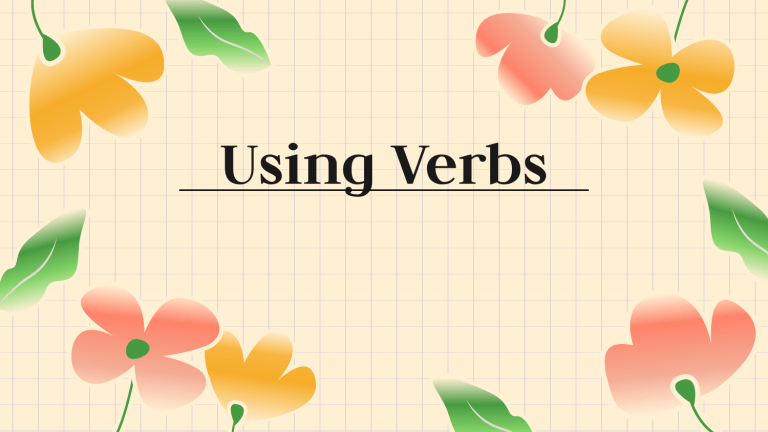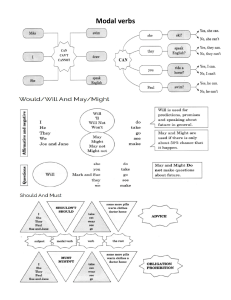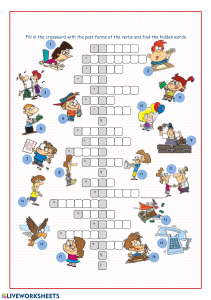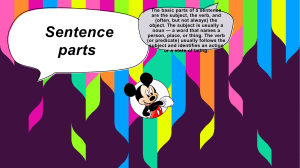
Using Verbs Using Verbs 8.1 A verb is a word used to express an action or a state of being. The two main types of verbs are action and linking verbs. An action verb tells what the subject does. It expresses an action that may be either physical or mental. That Ferris wheel moves very quickly. [physical action] We enjoyed the view from the top. [mental action] Some action verbs take a direct object. George Ferris built his first giant wheel in 1893. Using Verbs 8.1 A linking verb joins, or links, its subject to a subject complement, a word or group of words that identifies or describes the subject. Ferris was a bridgemaker and a creative thinker. People were amazed by the thirty-six wooden cars. Some verbs can function as action verbs in one sentence and linking verbs in another. When Angela looked down, she looked nervous. REMEMBER… A Sentence may have more than one verb. Some verbs consist of a verb phrase, which is made up of a main verb and at least one helping verb. When the structure was finished, it stood at 264 feet. Have you ever ridden a Ferris wheel? Types of Verbs 01 02 03 Linking Verbs Other LV Helping Verbs am, was, can be, will be, would have been, are, were, is, being, have been, should be appear, become, feel, grow, look, remain, seem, smell, sound, taste be (is, am, are, was, were, be, been, being), have (has, have, had), do (does, do, did), can, might, should, could, must, will, may, shall, would Using Verbs 8.1 In your writing notebook, list every verb and verb phrase in the sentences below, including helping verbs. Also list the linking verbs. HINT: One sentence contains compound verbs. 1. Many people believe in good luck charms. 2. Haven’t you ever worn a lucky shirt, carried a lucky coin, or avoided the number thirteen? 3. The horseshoe is a common symbol of good fortune. 4. Some people are certain that an acorn gives the gift of youth. 5. Friends gave President Theodore Roosevelt a rabbit’s foot.





